Les Chitra-Gottinéké, groupe Athapascan des Montagnes Rocheuses
Jean Michéa was a French anthropologist doing fieldwork in Fort Norman and the surrounding region during 1957-1958. He writes about his experiences both in what is now Tulı́t’a, and with the mountain Dene whom he spent some time with. His work talks about social organization, daily life, boat-making, and other aspects of nomadic ways of life.
Read the CBC Article about the film Michéa shot in Tulı́t’a, and the process of recovering it and archiving it in the community: "18-year quest brings 1957 film home to N.W.T. Dene" (2014)
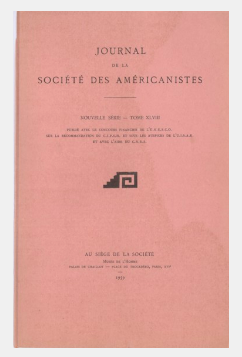
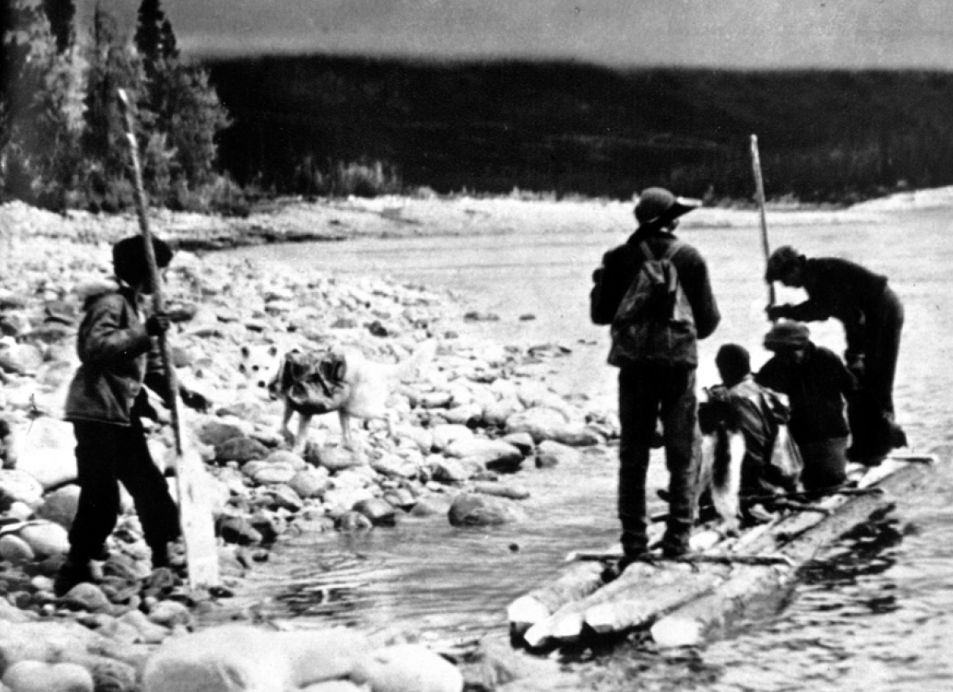
Photograph courtesy of Tom Andrews via CBC News.
Access this resource:
Full text available at: http://www.persee.fr/doc/jsa_0037-9174_1959_num_48_1_1192
Michéa Jean. “Les Chitra-Gottinéké, groupe Athapascan des Montagnes Rocheuses.” Journal de la Société des Américanistes 48 (1959): 197-235.
Legends and Stories from the Past
George Blondin has documented a number of stories in this text, most of which are related to Medicine Power. In a foreword, he explains that a teacher can use the stories for students K-9 but should read them to younger students with some explanation or context.
The stories contain teachings about:
The role of elders as teachers; weak and strong medicine power; medicine power for different things; communicating with animals; Yamoria and Yamozah; dancing; drum songs; sustainable hunting and times of scarcity; the prophet Ayah; Dene faith and its relationship to Christianity; animals behaving improperly; meeting the first white man; how to live well to get medicine power; using power in hand games; reincarnation; and George Blondin’s grandfather.
Read about more of Blondin's work on Medicine Power and Histories of the Sahtú region.
Access this Resource:
Legends and Stories from the Past has been made available open access by several organizations, such as Learn Alberta:
http://www.learnalberta.ca/content/kes/pdf/or_cf_fnmi_ot_ss_02_legends.pdf
Blondin, George. Legends and Stories from the Past. Yellowknife: Northwest Territories Department of Education, Culture, and Employment. 2000.
Creative convergence: exploring biocultural diversity through art
From Abstract: "Using multiple knowledge sources to interpret patterns of biodiversity can generate the comprehensive species characterizations that are required for effective conservation strategies. Caribou (Rangifer tarandus) display substantial intraspecific variation across their distribution and in the Sahtú Region of the Northwest Territories, Canada, three caribou types, each with a different conservation status, co-occur. Caribou are essential to the economies, culture, and livelihoods of northern indigenous peoples. Indigenous communities across the north are insisting that caribou research be community-driven and collaborative. In response to questions that arose through dialogue with five Sahtú Dene and Métis communities, we jointly developed a research approach to understand caribou differentiation and population structure. Our goal was to examine caribou variation through analysis of population genetics and an exploration of the relationships Dene and Métis people establish with animals within bioculturally diverse systems. To cultivate a research environment that supported łeghágots'enetę “learning together” we collaborated with Ɂehdzo Got'ı̨nę (Renewable Resources Councils), elders, and an advisory group. Dene knowledge and categorization systems include a comprehensive understanding of the origin, behaviors, dynamic interactions, and spatial structure of caribou. Dene people classify tǫdzı “boreal woodland caribou” based on unique behaviors, habitat preferences, and morphology that differ from ɂekwę́ “barren-ground” or shúhta ɂepę́ “mountain” caribou. Similarly, genetic analysis of material (microsatellites and mitochondrial DNA) from caribou fecal pellets, collected in collaboration with community members during the winter, provided additional evidence for population differentiation that corresponded to the caribou types recognized by Dene people and produced insights into the evolutionary histories that contribute to the various forms. We developed culturally respectful and relevant descriptions of caribou variation through partnerships that respect the lives and experiences of people that depend on the land. By prioritizing mutual learning, researchers can broaden their understanding of biodiversity and establish a common language for collaboration."
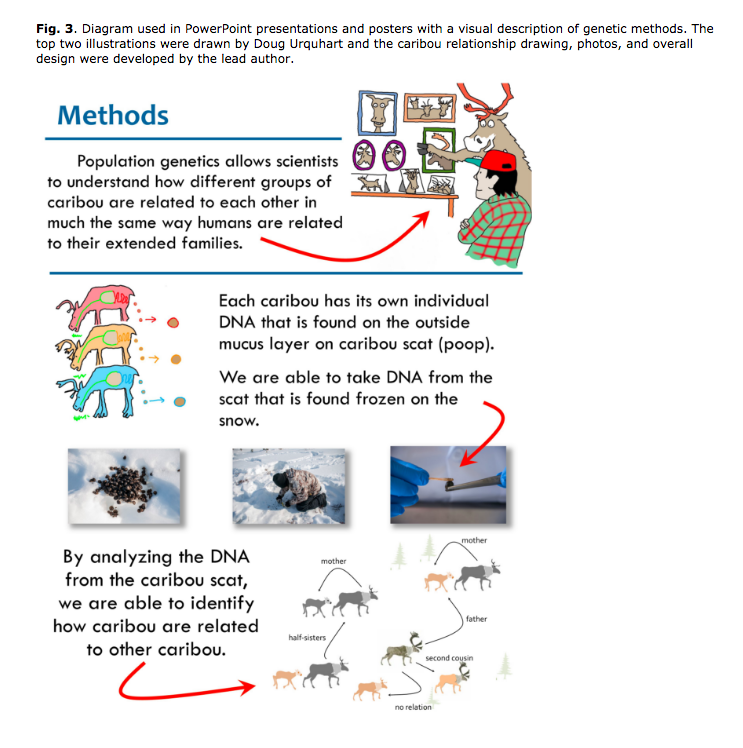
Image from article.
Access this Resource:
The full text of this article is available at: https://www.ecologyandsociety.org/vol22/iss2/art4/
Polfus, Jean, Deborah Simmons, Michael Neyelle, Walter Bayha, Frederick Andrew, Leon Andrew, Bethann Merkle, Keren Rice, and Micheline Manseau. “Creative convergence: exploring biocultural diversity through art.” Ecology and Society 22, no. 2 (2017).
Time and Story in Sahtú Self Government: Intercultural Bureaucracies on Great Bear Lake
Rice’s thesis explores Délı̨nę at the time of transition to self-government (2015). It describes the community’s hopes for self government’s future, the history that lead to its negotiation, the ways in which a legal agreement’s text may diverge from the ideas people hold about it, and the ways in which people are impacted by the new roles created by institutions of governance.
In many ways, Dene Ts’ı̨lı̨ has the power to transform Canadian institutions and laws, as in when Dene SSI board members in Délı̨nę use Dene Kedǝ to change the mood and content of an otherwise sterile meeting, and remind their leaders of their Dene origins. Dene understandings of the Final Self Government Agreement are different than the text itself: its oral life has different power in Délı̨nę than the written document, and opportunities for the FSGA to be a vehicle for Dene Ts’ı̨lı̨ and Dene Kedǝ lie in people’s hopes and plans for the future. In 2015, the mere idea of self-government had generated significant energy and planning around Dene Ts’ı̨lı̨ and Kedǝ preservation and revitalization.
From Abstract: "This thesis explores aspects of self-government in Délı̨nę, NT, Canada, a Sahtú Dene community of approximately 550 people. Délı̨nę’s Final Self Government Agreement (FSGA) was passed by the federal government of Canada in 2015, and the research for this thesis coincided with the beginning of Délı̨nę’s one-year transition into self government. The FSGA follows the Sahtú Dene and Métis Comprehensive Land Claim Agreement of 1993, and the region falls within Treaty 11. This thesis’ primary question is: What are the shared stories about the future of self-government that people in Délı̨nę tell? Subsidiary questions and themes that emerged from the research process include: How does the history of the Sahtú region inform contemporary negotiations, agreements, and the stories told about them? How do new roles created by institutions of governance impact the people who hold them? How does the text of a self-government agreement diverge from the ideas that people have about self-government?"
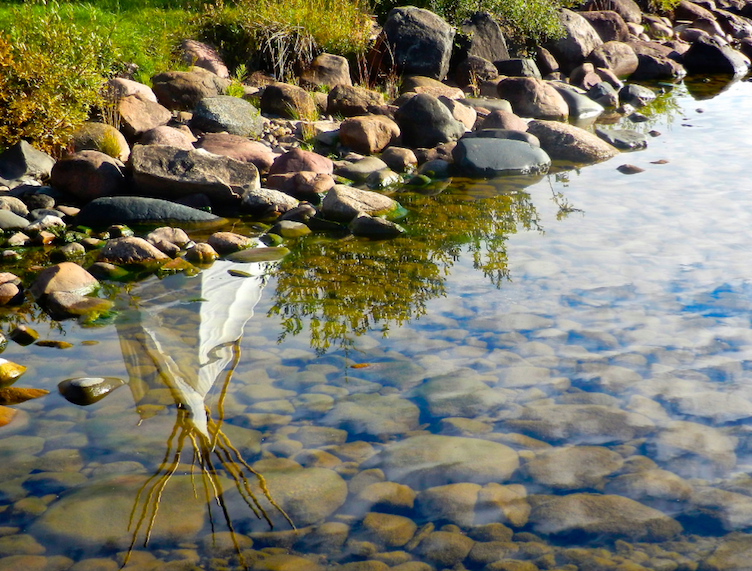
Access this Resource:
This thesis has been made available open access from the University of Alberta here: http://hdl.handle.net/10402/era.43158
Rice, Faun. Time and Story in Sahtú Self Government: Intercultural Bureaucracies on Great Bear Lake. Master’s Thesis, University of Alberta, 2016.
The Wind Waits For No One: Nı̨hts’ı Dene Ası̨́ Henáoréhɂı̨́le Ǫt’e: Spirituality in a Sahtúgot’ı̨nę Perspective
Fibbie Tatti’s thesis explores Sahtúgot’ı̨nę spirituality: it describes and defines spirituality “from the perspective of the Sahtúgot’ı̨nę, distinguishing spirituality from concepts such as worldview, culture, and medicine power” (iii, abstract). Spirituality is an essential component of Dene education, Tatti writes. In documents like the Dene Kedǝ curriculum (1993) inclusion of spirituality (which makes up one quarter of the curriculum, along with relationships with land, people, and self) is important but difficult, because spirituality is different for different Indigenous peoples, and means different things.
Teaching on the land, for the Sahtúgot’ı̨nę, is paired with ceremony: feeding the fire, for example. Ceremonies are still practiced but gradually less understood, in part due to language loss. Each ceremony must be contextualized by history an, and the Elders explain this in a language that fewer and fewer youth can understand. Tatti also emphasizes the distinctions between worldview, culture, and spirituality, emphasizing a dependent relationship with animals and the cosmos—this fundamental relationship guides Dene behaviour, laws, and epistemology.
From Abstract:
The Sahtúgot’ı̨nę have lived in the Sahtú Region around Great Bear Lake since time immemorial. Our Elders believe that spirituality is the foundation for our language, culture and worldview and that it is essential for our language and culture to be taught in the context of spirituality. This thesis provides a description and a definition of spirituality from the perspective of the Sahtúgot’ı̨nę, distinguishing spirituality from concepts such as worldview, culture and medicine power. In keeping with our traditional ways of preserving and transmitting knowledge to future generations, the paper relies heavily on stories passed on to us from our Elders. The paper elaborates on key concepts of Sahtúgot’ı̨nę spirituality. First, like human beings, all animals on this earth have a living spirit or bets’ı̨nę́. Other entities on this earth - plants and trees, the water and the wind - are also living beings with their own yǝ́dı́ı. Specific geographic sites with a special significance to the Sahtúgot’ı̨nę are also said to be yǝ́dı́ı. The other key concept is the existence of three dimensions of existence and their inter-relationship which is crucial to the understanding of Sahtúgot’ı̨nę spirituality.
Read other University of Victoria Language Revitalization MA Theses from Susan Saunders and Laura Tutcho.
Access this Resource:
The University of Victoria has made this thesis available for free here: http://hdl.handle.net/1828/6113
Tatti, Fibbie. The Wind Waits For No One: Nı̨hts’ı Dene Ası̨ ́ Henáoréhɂı̨ ́le Ǫt’e: Spirituality in a Sahtúgot’ı̨nę Perspective. Master’s Thesis, University of Victoria, 2015.
Resilience to Ecological Change: Contemporary Harvesting and Food-Sharing Dynamics in the K’asho Got'ine community of Fort Good Hope, Northwest Territories
From Abstract:
This thesis examines how community hunting strategies and food-sharing networks facilitate social-ecological resilience to a decreased availability of barren-ground caribou in the K’asho Got’ine region of the Sahtú Settlement Area. It is based on collaborative research carried out with the Fort Good Hope Renewable Resources Council, including participant observation and interviews. I demonstrate that organizers of autumn community hunts (2007-2010) responded flexibly to ecological conditions (i.e. the availability of different species of game), and to community perspectives about the hunts, while working to address the broader needs of traditional knowledge education for youth and the food security of vulnerable demographics. A tradition of food-sharing has always been an important mechanism by which the latter need is met. Based on a comparison of two hunts in 2009 (a community hunt versus a series of household hunts), I find that vulnerable groups received meat to a greater extent after the community hunt in part through their exercising their eligibility for it through requests.
Access this Resource:
The University of Alberta has made this thesis accessible to the public.
McMillan, Roger C. Resilience to Ecological Change: Contemporary Harvesting and Food-Sharing Dynamics in the K’asho Got’ine community of Fort Good Hope, Northwest Territories. Master’s Thesis, University of Alberta, 2012.
Tracks that matter: On space, place and Hare Indian ethnobiology with special reference to the Marten (Martes americana)
Abstract:
The empirical setting and context for this contribution is the Hare Indian land in the Northwest Territories in Canada. The author opposes a purely taxonomic approach to ethnobiology. The main focus is on the Hare Indian trappers’ knowledge about prey animals, most notably the marten. This knowledge is based on experiences involving both practical and emotional engagement as well as narrative communication. It is argued that this knowledge is converted to actual trapping strategies. The same knowledge also has implications for identity management, because it is regarded as a prerequisite in order to feel at home in a Hare Indian Space, and it is also linked to how places are invested with emotion. Thus the trappers’ behavior and action is not only invested with, but also motivated by, emotion. Based on empirical information, it is suggested that feelings about the nature of nature and what it contains are generated by how associations are tied to clusters of significant observations and ideas.
Access this Resource:
DOI: https://doi.org/10.1080/08003830902951540
Broch, Harald. "Tracks that Matter: On Space, Place and Hare Indian Ethnobiology with special reference to the Marten." Acta Borealia 26, no. 1 (2009): 77-95.
Water hearts and cultural landscapes: Practical understanding and natural resource management in the Northwest Territories, Canada
This dissertation explores how socio-cultural and political practices enable people to become institutional bricoleurs in resource management.
Abstract:
The Canadian North finds itself in a period of Canadian history with unprecedented levels of social and environmental complexity, political uncertainty and economic change. Within the Mackenzie River valley of the Northwest Territories, major industrial resource development projects are underway. At the same time, innovative natural resource management (NRM) governance institutions are being proposed. This dissertation explores how socio-cultural and political practices enable people to become institutional bricoleurs in resource management. From Déline, Northwest Territories, I examined how outside resource managers from federal and territorial governments, environmental non-government organizations, and aboriginal community leaders perceive, negotiate and practically apply one another's diverse understandings of NRM. This research is based on my active working group participation in two locally-driven collaborative projects: the Great Bear Lake Watershed Management Plan (GBLMP) and the long-term protection of an aboriginal cultural landscape for Sahoyúé-Ehdacho (Grizzly Bear Mountain - Scented Grass Hills National Historic Site). Within these cases of emergent community-based co-management, an ethnographic approach was pivotal in exploring new approaches to NRM arising from the dynamic relations between local and outside institutional actors. Recognition and incorporation of the notions of difference and practice establishes a space for potential positive social change. I suggest that the term `practical understanding' encapsulates how communities and outside agencies together perceive NRM. In the process of developing the GBL watershed management plan, creating a relational space resulted in shared understanding of resource management through narratives such as the story of the Water Heart. For shared understanding to be applied in the development of new formal institutions, however, it must be reconsidered as practical understanding and part of strategy in social practice. The political process of protection for Sahoyúé-Ehdacho demonstrated that strategies as engagement and practical disengagement are integral to practical understanding. The significance of this perspective of NRM is that it offers a cultural framework with which to explore institutional hybridity. Such a framework requires an examination of the ways in which we perceive, conceive and actively apply culture and power relations in resource management planning that is predominated by the increasingly globalized nature of natural resources.
Access this Resource:
This dissertation can be requested from ProQuest.
Caine, Kenneth James. Water hearts and cultural landscapes: Practical understanding and natural resource management in the Northwest Territories, Canada. Doctoral Thesis, University of Alberta, 2008.
The people of Denendeh: Ethnohistory of the Indians of Canada's Northwest Territories
Book description:
For fifty years anthropologist June Helm studied the culture and ethnohistory of the Dene, “The People,” the Athapaskan-speaking Indians of the Mackenzie River drainage of Canada's western subarctic. Now in this impressive collection she brings together previously published essays—with updated commentaries where necessary—unpublished field notes, archival documents, supplementary essays and notes from collaborators, and narratives by the Dene themselves as an offering to those studying North American Indians, hunter-gatherers, and subarctic ethnohistory and as a historical resource for the people of all ethnicities who live in Denendeh, Land of the Dene.
Helm begins with a broad-ranging, stimulating overview of the social organization of hunter-gatherer peoples of the world, past and present, that provides a background for all she has learned about the Dene. The chapters in part 1 focus on community and daily life among the Mackenzie Dene in the middle of the twentieth century. After two historical overview chapters, Helm moves from the early years of the twentieth century to the earliest contacts between Dene and white culture, ending with a look at the momentous changes in Dene-government relations in the 1970s. Part 3 considers traditional Dene knowledge, meaning, and enjoyments, including a chapter on the Dogrib hand game. Throughout, Helm's encyclopedic knowledge combines with her personal interactions to create a collection that is unique in its breadth and intensity.
Access this Resource:
Helm, June, with contributions by Teresa S. Carterette and Nancy S. Lurie. The people of Denendeh: Ethnohistory of the Indians of Canada’s Northwest Territories. Iowa City: University of Iowa Press, 2000.
Read the Google Books Preview:
Medicine Power Ɂı̨́k’ṕ Įk’ǫǫ́
This book contains Dene Medicine Power Stories in English, with translations. Many of the stories are about Cheely, K’áhbamı Túé, a Caribou medicine power man who was a Caribou in a former life, reincarnated, but was still able to communicate with the Caribou in order to make sure that people would not starve. There are stories about Yamoria and his brother, and Edzo making peace between the Dogrib and Chipewyan. One very interesting story is Yamoria giving the Dene their laws. Another has to do with a man named Daoyee and how he got his medicine power, not too long ago. Many of the stories have to do with the use of medicine power and the importance of only using it to help people.
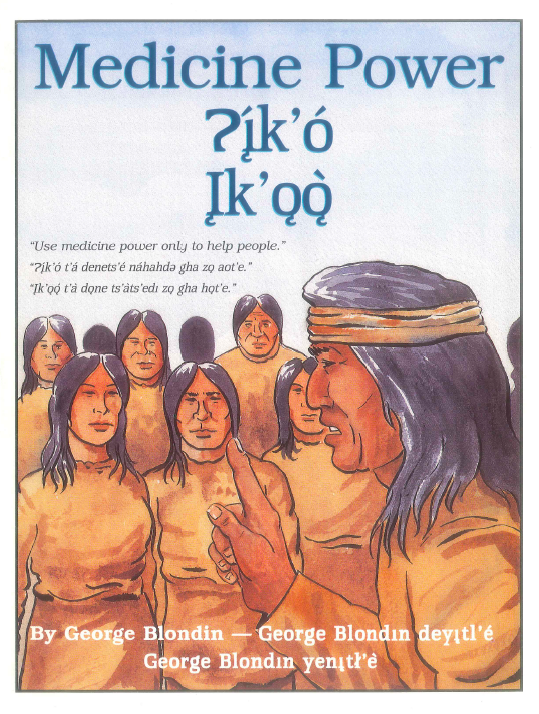
Access this Resource:
The Dene Cultural Institute (now Yamozha Kue Society) can be contacted through its Facebook Page.
Blondin, George. Medicine Power Ɂı̨́k’ṕ Įk’ǫǫ́. Dene Cultural Institute, 1996.
Illustrated by Wally Wolfe, Edited by Aggie Brokman, North Slavey Translation by Dora Grandjambe, Dogrib Translation by Violet Mackenzie and Philip Rabesca.


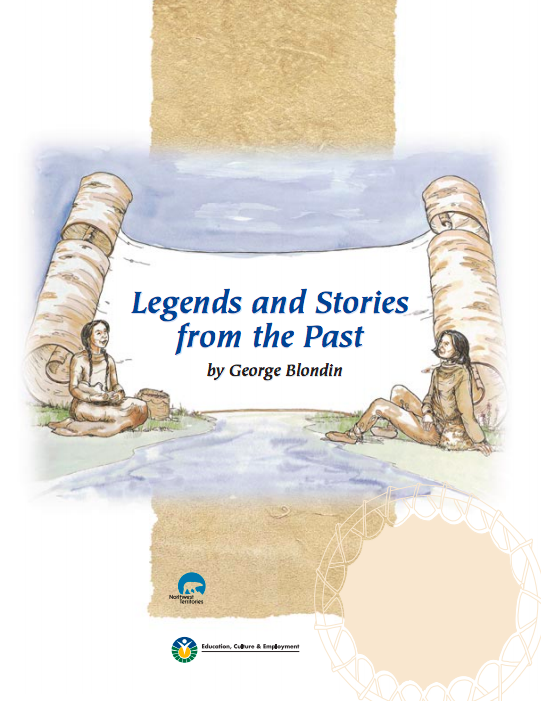
 Phone: 867-374-4040
Phone: 867-374-4040 Email:
Email: